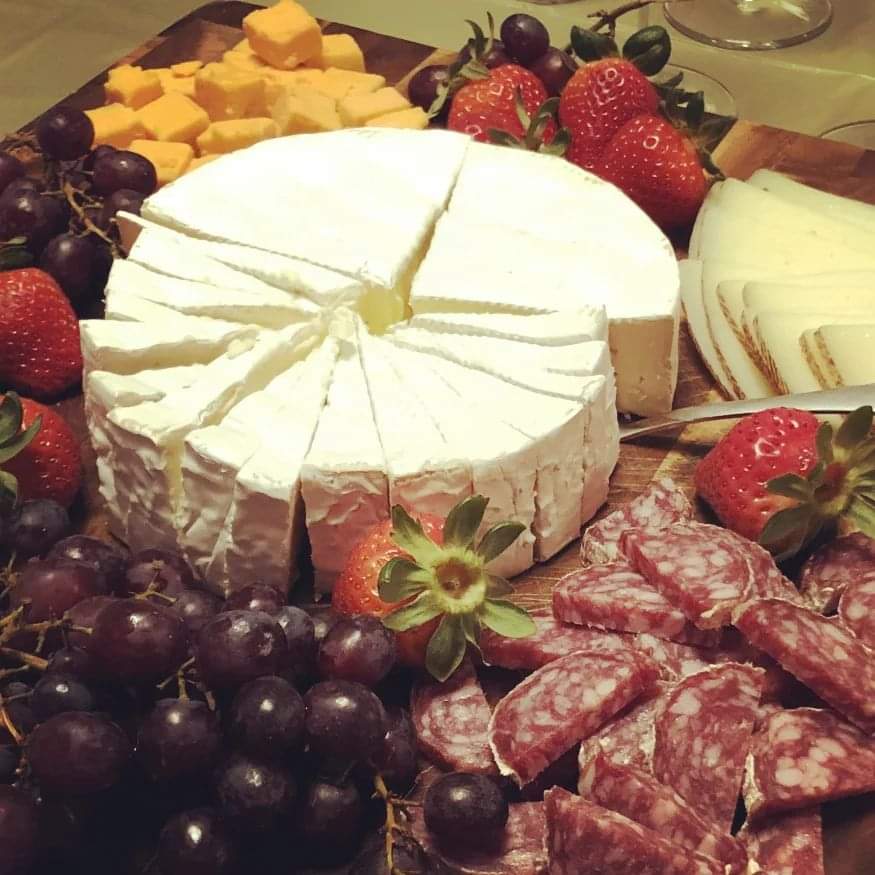I love charcuterie boards! Maybe it’s because I’m from Wisconsin, and my love for cheese was ingrained in me from a young age. Regardless, as an adult, I have a true appreciation for both the art and science involved in creating a charcuterie board. They exude beauty through different colors, textures, and arrangements. They’re simple in nature, but the potential for variety makes them complex. In fact, this is one of the reasons I decided to post about my simple charcuterie board. It’s a good mix that pairs well with a variety of wines. Serve with crackers if desired.

3 Cheeses
- Sharp Cheddar
- Brie
- Manchego or Aged Gouda
2 Meats
- Hard Salami
- Prosciutto
2 Fruit
- Strawberries
- Grapes
When making a charcuterie board, the possibilities are endless. It’s easy to get overwhelmed or carried away. I like my simple charcuterie board because it covers most wine pairings:
- Sharp Cheddar pairs well with full-bodied wines, like Cabernet Sauvignon or Syrah. It can also go well with a Sparkling Wine or Champagne because the bubbles and acidity clear the palate and balance the strong cheese.
- Brie pairs well with an oaky Chardonnay because creamy matches creamy. It also pairs well with crisp white wines like Sauvignon Blanc or Pinot Gris.
- Manchego or Aged Gouda are great because they are versatile cheeses and pair with many different wines, including an earthy Pinot Noir.
- Any meat will pair well with red wines – I like hard salami and prosciutto because they are not gamey and balance the cheese varieties.
- Fruits pair well with Sparkling Wine and sweet to semi-sweet wines, like Moscato or Riesling. Fruit also adds color to the board.
Keep in mind that charcuterie boards are mostly subjective, so pick what you like and be creative with how you arrange it on the board. You can cut cheese in different shapes (cubes vs. sliced) to add visual interest.
In summary, when hosting a wine tasting event or preparing a light dinner to go with your wine, a charcuterie board can be the perfect option.